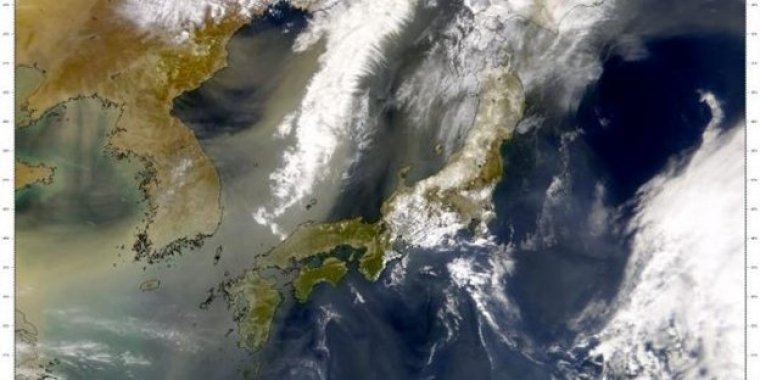| News / Science News |
Will warming bring a change in the winds? Dust from the deep sea provides a clue
The westerlies -- or westerly winds -- play an important role in weather and climate locally and on a global scale by influencing precipitation patterns, impacting ocean circulation and steering tropical cyclones. Finding a way to assess how they will change as the climate warms is crucial.

Image of a dust plume crossing the Korean Peninsula. Photo: SeaWiFS Project, NASA/Goddard Space Flight Center, and ORBIMAGE
Typically, the westerlies blow from west to east across the planet's middle latitudes. But scientists have noticed that over the last several decades, these winds are changing, migrating poleward.
Research suggests this change in winds is occurring because of climate change. But scientists have been debating whether the poleward movement of the westerlies will continue as temperatures and atmospheric carbon dioxide increase under future warming scenarios.
It's been difficult to resolve this scientific question because our knowledge of the westerlies in past warm climates has until now been limited.
Researchers at Columbia University's Lamont-Doherty Earth Observatory describe a new method of tracking the ancient history of the westerly winds -- a proxy for what we may experience in a future warming world.
Jordan Abell and Gisela Winckler developed a way to apply paleoclimatology, the study of past climate, to the question of the behavior of the westerly winds, and found evidence that atmospheric circulation patterns will change with climate warming.
The result represents a breakthrough in our understanding of how the winds changed in the past and how they may continue to change in the future.
By using dust in ancient, deep sea sediments as an indirect tracer of wind, the researchers were able to reconstruct wind patterns that occurred three to five million years ago.
Knowing that winds, in this case the westerlies, transport dust from desert regions to faraway locations, the authors examined cores from the North Pacific Ocean.
This area is downwind of Eastern Asia, one of the largest dust sources today and a known dust-generating region for the past several million years.
By measuring the dust in cores from two different sites thousands of kilometers apart, the scientists were able to map changes in dust, and in turn the westerly winds. (National Science Foundation)
YOU MAY ALSO LIKE





